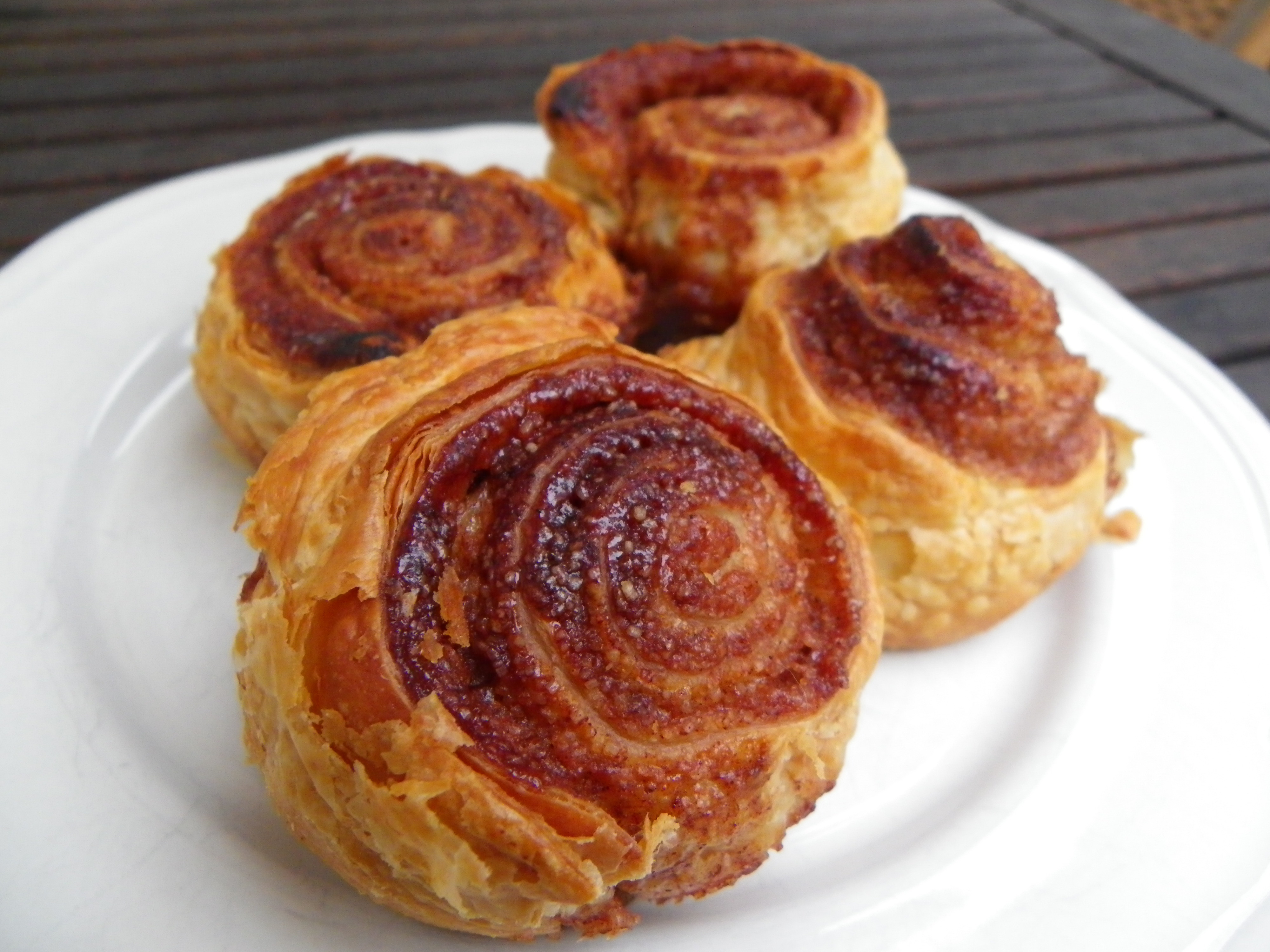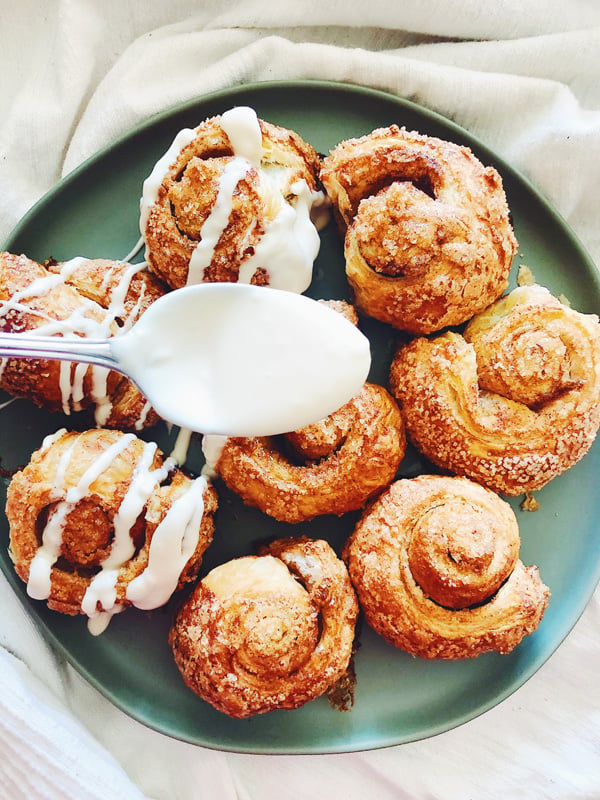

If your dough gets too soft, especially if you’re using puff pastry, place it in the freezer for 5 to 10 minutes to firm up the log before cutting it. Cutting with a knife tends to squish the sides this method is a little more gentle on the dough. Rather than pressing down from the top, drag the string underneath the roll and then cross the ends as if you were going to tie it, but without actually looping one end under the other. Roll the dough starting with the long side closest to you, and err on the side of rolling the spiral too tight rather than too loose.Īnother trick I learned: You can use a piece of thread or floss to cut the cinnamon rolls. To avoid that, go slowly as you roll the log the first time, gently folding the dough and filling on top of itself. However, it’s difficult but not impossible to re-roll the spiral once you’ve cut the slices. (No need to toast the nuts before sprinkling on top of the filling.) The good news is that cinnamon rolls can be somewhat forgiving, even with tiny lumps that can make the log feel uneven, because you can reshape the individual rolls once they are sliced. Nuts or raisins are among the most popular additions to cinnamon rolls, but they do make rolling the dough a little trickier. Another expert tip I learned from her: Use a bench scraper - a versatile tool that’s helpful for scraping dough off a counter or evenly spreading flour or something like this mixture - to evenly spread the filling across the top of the dough.Īs the rolls bake, some of that thick filling will spill onto the baking sheet and caramelize, an added treat for those of us who like our sugar a little on the crispy side. The filling from Moore’s book also includes an egg white, which helped bind all the ingredients and gave a bite to the baked filling. I prefer a filling where the butter, sugar and cinnamon are combined before being spread because if you simply brush the butter onto raw dough, it seems to soak in and make the dough even harder to handle. Rolling it on a piece of parchment paper that you’ve dusted ever-so-slightly with flour will help when it comes time to roll the dough into a long log. You’ll need to roll the dough into a large rectangle, about 14 inches by 12 inches. No matter if using homemade dough or store-bought, yeasted dough or puff pastry, the assembly process is the same. The recipe from Orangette blogger Molly Wizenberg, which she shared in Bon Appetit in 2008, is a good from-scratch recipe to start with if you’re making cinnamon rolls for the first time. You heat the milk and some of the butter together, add the yeast, flour and a little sugar and let the dough rise for at least an hour. Homemade cinnamon roll dough almost always calls for milk and butter, sometimes an egg.

But it’s a good way to get started baking your own cinnamon rolls if you aren’t ready to make the dough. Pizza dough is a decent substitute for homemade yeasted dough, though the rolls won’t be as sweet as you’re used to because there is no sugar in it.

The version from Christine Moore’s “Little Flower Baking” contains one of the best fillings I’ve had in any cinnamon roll. The puff pastry makes something flakier and crisper than traditional rolls, so we are calling them cinnamon pinwheels. So why not start with a prepared dough? The most common types of prepared dough found in grocery stores are pizza dough and puff pastry, and you can make cinnamon rolls out of either one. You need to stick with a schedule or the dough will rise too much, either in the bowl or on the floured counter or after you’ve shaped the rolls. Most cinnamon roll recipes call for a substantial quantity of it - anything over 1 teaspoon feels substantial to me - but that means the dough will rise quickly.

In truth, yeast is easier to work with than you might think. If you’ve never worked with it, those tiny, smelly pellets might seem like dynamite, ready to over-ferment at a moment’s notice and ruin the whole project. Yeast is enough to scare off plenty of would-be bakers. The very best cinnamon rolls are ooey gooey and soft, and that requires some kind of yeasted dough. AUSTIN, Texas - If the most intimidating part of making cinnamon rolls is making the dough, don’t make the dough.


 0 kommentar(er)
0 kommentar(er)
